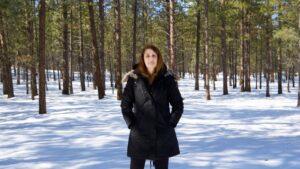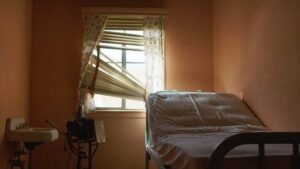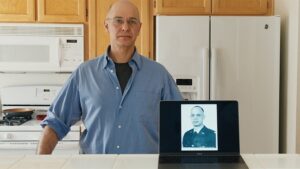
First-time director Hannah Olson‘s documentary Baby God can now be seen streaming on HBO Max, executive-produced by Oscar nominees Heidi Ewing and Rachel Grady. It’s a shocking examination of the work of a Las Vegas fertility specialist, Dr. Quincy Fortier, and the many women he guided to pregnancy through use of his own sperm, often without their knowledge or consent. The documentary follows his newly-discovered offspring as they grapple with the scope of his misdeeds and the impact that his genes may have on their own identities.
The post-production finishing for the film was completed at New York’s Goldcrest Post with Senior Colorist Marcy Robinson, working with Olson and her Cinematographer Justin Zweifach to apply the final color grade, blending expansive original material and a huge assortment of archival media into a seamless, gripping narrative.

Zweifach used a Canon C300 camera to capture both interview segments and exterior landscapes of Nevada, Utah and Minnesota, where the principals reside, in a spare and hauntingly beautiful manner.
He explains, “The film tells one big story, and many smaller, more intimate stories. There are the horrendous actions of Fortier, and then you have deeply personal stories of people struggling with their identity. We wanted to find a way to capture both, so we contrast the epic landscapes where the story takes place with details like people’s faces and hands.”
That concept was refined during their color sessions at Goldcrest Post as Robinson was required to establish the cohesion between the pristine original material and the extensive archival media gathered by Olson, which included decades old home movies, black & white photographs, grainy news footage, medical micro-photography, and much more.
Olson felt that Robinson’s background in print photography gave her a natural feel for the archival media, observing, “She thinks about color in a very naturalistic way. She doesn’t like to use colors that can’t be produced photo-chemically. I loved that because so much of this film derives from archival film and home movies. Her approach to that made sense.”

“Marcy’s approach to color is instinctual,” Zweibach added. “She brought something natural and beautiful to the imagery, without calling attention to the process.”
Much of the film takes place in Las Vegas, which is revealed through panoramic shots of rows of nearly identical houses on the city’s suburban outskirts and sweeping views of the surrounding desert and mountains. Robinson took special care in grading landscape imagery, as Olson stated, “Las Vegas is often presented on film in a garish way. We wanted to depict it differently. We thought of the landscape as a symbol for the vastness of Fortier’s seed and the space separating his children. It needed to seem limitless and natural.”
While the color grade adheres to realism, Olson says that Robinson’s grading played a vital storytelling role. “The color is constrained, but in a smart, interesting way. Marcy got the vision of the film. She helped sew the seams together.”
You can learn more about Goldcrest Post at its website or call Managing Director Domenic Rom at 212-897-3935.
All photos courtesy of HBO Max.





